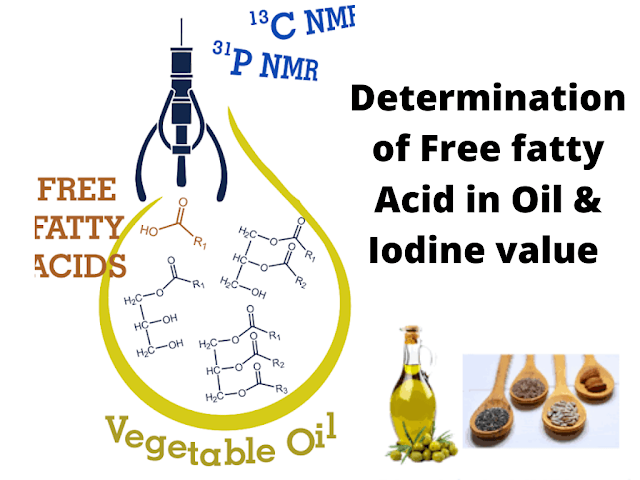The free fatty acid is determined by titrating the sample in ethanol with standard aqueous sodium hydroxide using a phenolphthalein indicator solution.
APPARATUS
250 ml
Erlenmeyer Flask
100 ml
Measuring Cylinder
50 ml Burette
REAGENTS
Ethanol 95%
v/v
Phenolphthalein
Indicator Solution, prepared by Test Method
Preparation of Phenolphthalein Indicator Solution.
0.1M Sodium Hydroxide, prepared under Test Method.
Standardization of Sodium Hydroxide Solution
Procedure
Accurately weigh about 10 g of sample into a 250 ml Erlenmeyer flask (gram).
Measure 100 ml of ethanol into a 250 ml Erlenmeyer flask, add 1 ml phenolphthalein indicator solution, and titrate to a faint pink colour with 0.1M sodium hydroxide.
If the ethanol is already
alkaline to phenolphthalein, add sufficient 0.1M hydrochloric acid to dissipate
the pink colour and then titrate with 0.5M sodium hydroxide to a faint pink
colour.
Add the neutralized ethanol to the Erlenmeyer flask containing the sample, warm it, and swirl to dissolve the sample.
Titrate with 0.1M sodium hydroxide to a faint pink colour (V).
CALCULATION OF FREE FATTY ACID
where V is
the volume of NaOH.
M NaOH is the
molarity of the NaOH.
M Fatty Acid
is the molar mass of the fatty acid.

